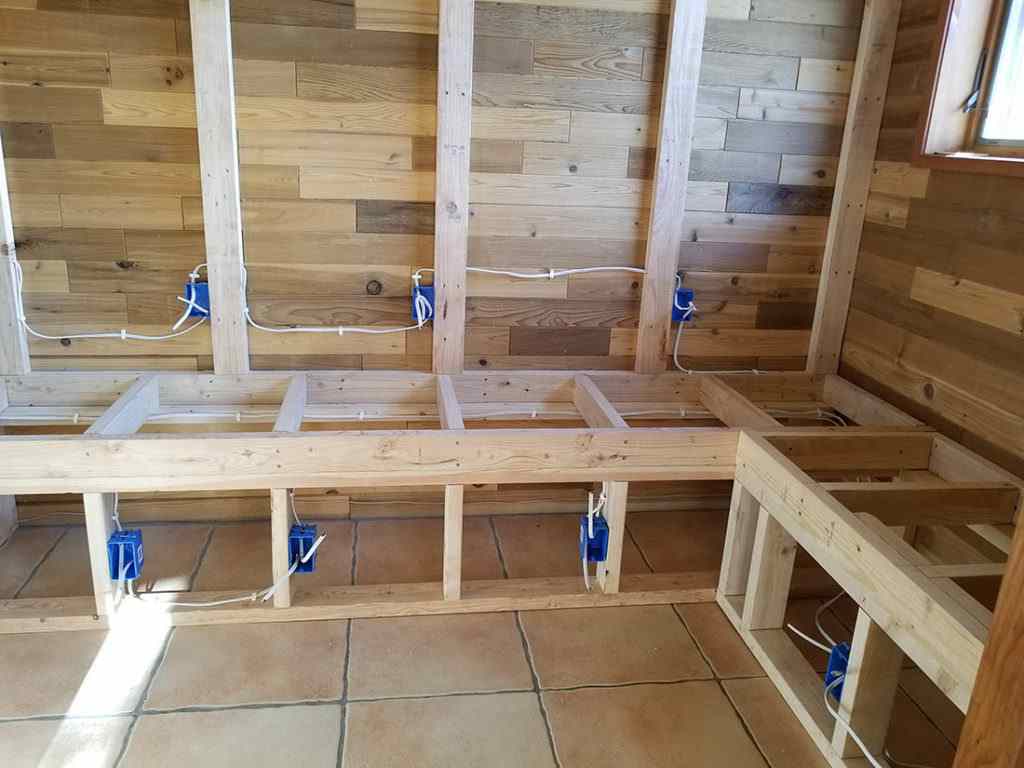Sauna at home: how to plan and equip it?
Having a sauna at home is not only an investment in your health, but also an opportunity to create a unique place to relax and unwind. A sauna has many benefits: it improves blood circulation, strengthens the immune system and helps you relax after a hard day. However, before embarking on this project, it is important to plan and prepare all the necessary aspects well. In this article, we will discuss how to choose the right place for a sauna, what materials to choose, the importance of ventilation, heating methods and finishing options.

Choice of location
The first step in planning a sauna is to choose a suitable location. A sauna can be installed either indoors or outdoors, depending on your needs and the layout of your home.
- He sees: If you want to install the sauna inside the house, it is important to choose a room that is well insulated and has easy access to plumbing and electricity. A basement or a separate room next to the bathroom is recommended.
- Lauke: An outdoor sauna is a popular choice, offering more privacy and a more natural feel. You can set up a separate building in the courtyard or next to the terrace. An outdoor sauna often requires extra protection from the weather, so make sure you consider insulating the roof and walls.
Choice of materials
The materials used to build your sauna are an essential element that determine both aesthetic and functional solutions.
- Wood: Traditionally, wood has been used in saunas because of its heat conducting properties and natural beauty. The most popular species are spruce, pine, cedar and lime wood. Spruce is inexpensive but tends to change colour over time. Cedar is moisture-resistant and has a pleasant smell, while lime is a soft and pleasant wood to the touch and less likely to heat up.
- Insulating materials: Good thermal insulation is essential for an efficient sauna. It is recommended to use stone wool or special insulation boards for saunas, which can withstand high temperatures and protect against moisture.
- Floors: When choosing a floor covering, it is important to consider its resistance to moisture and heat. Wooden floors are the most common, but ceramic tiles are also an option as they are easier to clean.
Ventilation
Adequate ventilation is essential for a healthy and safe sauna environment. Inadequate ventilation can lead to excessive moisture build-up, which can lead to mould growth and damage to materials.
- Natural ventilation: It is best if the sauna has natural ventilation, where the air can circulate freely. This is achieved by installing air inlets and outlets on opposite sides of the room.
- Mechanical ventilation: If natural ventilation is not sufficient, a mechanical ventilation system should be considered to help remove excess moisture and ensure constant air circulation.
- Natural ventilation: It is best if the sauna has natural ventilation, where the air can circulate freely. This is achieved by installing air inlets and outlets on opposite sides of the room.
Heating methods
The heating method is one of the most important elements of a sauna. It determines how quickly and in what way the required temperature is reached.
- Electric stoves: It is the most popular choice for small and medium-sized saunas. Electric stoves are easy to operate, do not require special ventilation systems and heat up quickly. They also allow precise temperature control.
- Wood-burning stoves: If you prefer a traditional sauna feel, a wood-burning stove is a great choice. Such a stove provides a natural heat source and a pleasant wood smell. However, adequate ventilation is necessary to remove smoke and combustion products.
- Infrared ovens: These heaters work by emitting infrared rays, which directly heat the body rather than the air around it. They are efficient, but the heating sensation may not be to everyone's liking.
Decoration and interior solutions
Bathroom decoration is not only important for aesthetics but also for functionality.
- Walls and ceilings: Wooden boards are the most common wall and ceiling cladding solution. Choose wood that does not tend to heat up and does not cause discomfort when sitting or leaning. It is also worth considering treating the wood with special oils that protect it from moisture and temperature changes.
- Benches and seating areas: It is important that benches are ergonomically designed to be comfortable to sit and lie on. They should be positioned at different heights to allow for different heat intensities.
- Lighting: Bathroom lighting should be soft and dim to create a cosy atmosphere. LED lighting with warm LEDs is recommended as it not only saves energy but also provides a soft light.
Conclusion
Installing a sauna at home is a challenging but worthwhile project. The right location, quality materials, good ventilation and adequate heating will ensure that the sauna lasts a long time and provides enjoyment for all family members. Do not forget to allow enough time for planning, as proper preparation is a guarantee of a successful project. Also, if you are unsure about some technical aspects, it is always a good idea to consult a professional.